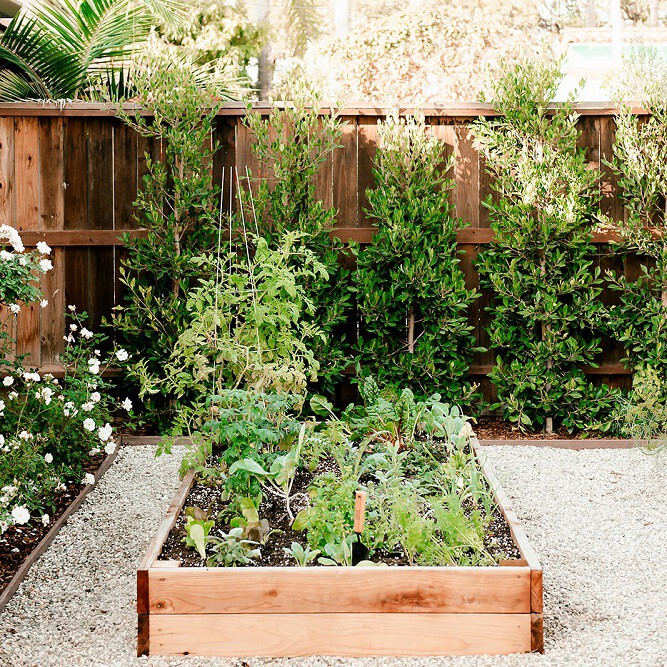They're easy on your eyes and your back.

With spring just at our fingertips, it's time to start fantasizing about all the wonderful things that come with the season ahead-if you haven't already, that is. While we're looking forward to longer days and warmer weather, it's getting our hands dirty in the garden that we're most excited about. Whether you're a seasoned gardener or a novice, planting in a raised bed is a great way to get growing. Ahead, farmer, writer, and educator Annie Novak walks us through the initial process.
Know the Benefits
You may be drawn to the look of a raised bed, but Novak says there are other benefits, too. If the soil you have in your yard is poor or contaminated, a raised bed is a nonnegotiable. Novak says to be sure to use a heavy-duty barrier or liner if this is the case. Even if your soil is fine, a raised bed allows you to use a custom, nutrient-rich soil of your choice. They also improve drainage and decrease your chance of pesky weeds and pests. If you're a city dweller lucky enough to have to outdoor space, you'll be glad to hear that raised beds work on hard surfaces. They also allow for maximum use of minimal space-a concept you're probably all too familiar with.
What to Grow
Almost anything you grow in regular ground-level soil-herbs, vegetables, flowers, natives, and smaller perennials-can be grown in a raised bed. "If you're growing shrubs, trees or larger perennials, you most likely don't need a raised bed, per se," says Novak. "Although you can make the aesthetic choice to have one."
Pick Your Dimensions
You can choose your dimensions based on your space, but Novak recommends at least eight to twelve inches above soil level (some of the bed will be below soil level) and no longer than three to four feet wide. "Length does not matter, but the width will affect how far across the bed you have to reach to garden," she explains. "I've seen many garden beds, for example, that are four by four feet squares-an almost impossible dimension to garden in, particularly the middle!"
Go Local
Novak builds all of her raised beds, so she can adjust to the dimensions she likes. She makes sure to use untreated wood, since she grows edible crops. "I used untreated wood only with the understanding that I will likely have to replace the wood every seven or so years as it rots away," she says. "I use Black Locust, which is a local choice-you can ask around in your region what is the best wood to use."
Select Your Soil
The type of soil you use depends on what you are growing. Most vegetable gardeners will use a mix of a good quality compost blended with topsoil or potting soil. Novak warns to never use just potting soil. "It's a peat moss based product designed for containers-a growing environment that doesn't have the decomposers and aerators that ground level raised beds do." Whatever soil you are using, Novak says the key is to correctly calculate the volume you need, taking into account how much the soil will settle as water compresses the airspace or as the soil naturally settles over time. "You don't want to end up with a bed where the wood frame sits high above the soil level," she says. Season to season, you can adjust by adding and subtracting different soils and see what works, but Novak says adding a topdressing of compost seasonally "to bring up the soil levels and inoculate the bed with more microorganisms and nutrients" is a good rule of thumb.
Add Plants
Since everything is concentrated in a smaller area, you'll want to plant your plants a little closer together than you would if they were going directly in the earth. Think about placement intuitively: Put crops you need more access to on the sides and ones that take longer to harvest in the middle. What is less obvious is figuring out which plants are friends and which are not. This is no joke: "A classic example are alliums and legumes," says Novak. "Onions and their kin exudate chemicals which limit the growth of beans. I have experienced it personally, it's a real problem." She recommends that you write down everything you are planning to plant and look up their relationships in "Carrots Love Tomatoes" by Louise Riotte or searching companion planting online. Once you have your beds mapped, you tend to your plants the same way you would wherever you plant them.